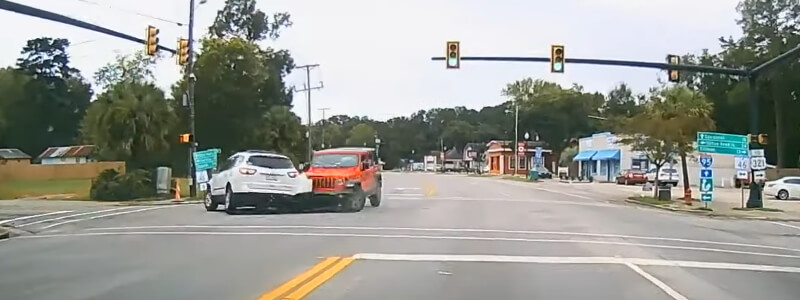T-Bone Accidents: Who at Fault
Contents
- T-Bone Accidents: Who at Fault
- What is a T-Bone Accident?
- Common Causes of T-Bone Accidents
- Common T-Bone Car Accident Injuries
- Determining Fault in a T-Bone Accident
- How to Prove Fault in a T-Bone Accident
- Steps to Take After a T-Bone Accident
- When to Call an Attorney
- Medical Treatment After a Side Impact Accident
- Seeking Compensation for Damages
- Conclusion and Final Thoughts
- FAQs on T-Bone Accidents
- Who is usually at fault in a T-bone?
- What does T boned mean in an accident?
- What causes a T-bone accident?
- How would you determine who was at fault in this collision?
- Are T-bone accidents common?
- What side of the car gets t boned the most?
- What bone is most likely to break in a car accident?
- What percent of T-bone crashes are fatal?
- What injuries can you get from getting T boned?
- Is T-bone the worst accident?
- Can you survive a T-bone crash?
T-bone accidents, also known as side-impact collisions, can be some of the most dangerous types of car accidents. They occur when one vehicle’s front end collides with the side of another vehicle, often at intersections. These accidents can cause serious injuries and extensive damage to both vehicles involved.
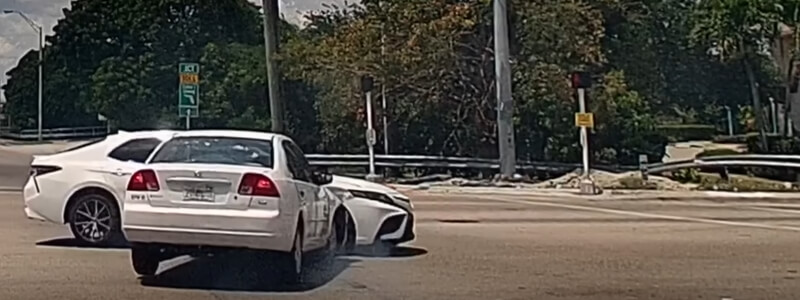
If you have been involved in a T-bone accident, it’s important to understand how fault is determined and what steps you need to take to seek compensation for your injuries and damages. In this blog post, we will explore the common causes of T-bone accidents, how fault is determined, what evidence you need to support your claim, and how to seek compensation for your losses.
What is a T-Bone Accident?
A T-bone accident, also known as a side-impact collision, occurs when the front end of one vehicle collides with the side of another vehicle, forming the shape of a T.
Side impact car crashes, also known as T-bone accidents or broadside collisions, kill between 8,000 and 10,000 people annually in the United States, more than rear-end and head-on collisions combined.
These types of accidents usually occur at intersections when one driver fails to yield to oncoming traffic or runs a red light or stop sign. T-bone accidents can be very dangerous and often result in serious injuries or even fatalities.
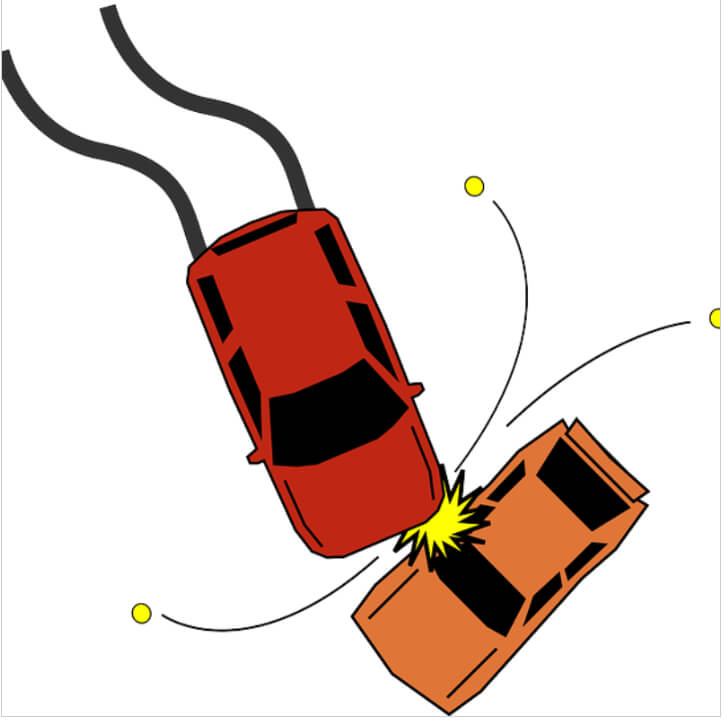
Side Impact car Crash Statistics
- T-Bone Accidents are the deadliest for children, and over the past 20 years, deaths caused by side-impact crashes have increased by 20%, from 31% to 51% due to increased travel speeds and the heightened number of SUVs.
- Side-impact car crashes leave occupants relatively unprotected, even at speeds as low as 20 miles/hour.
- In single-vehicle crashes, single-vehicle side impacts accounted for just 2 deaths per million, while single-vehicle rear impacts accounted for less than 1 death per million.
- In multiple-vehicle crashes, multiple-vehicle side impacts accounted for 5 deaths per million, and multiple-vehicle rear impacts accounted for 2 deaths per million
- Side impacts accounted for another 23% of passenger vehicle occupant deaths in 2020.
Common Causes of T-Bone Accidents
T-bone accidents are common on roads and highways worldwide. These types of accidents occur when one vehicle crashes into the side of another vehicle forming the shape of a T.
Running a Red Light or Stop Sign
One of the most common causes of T-bone accidents is running a red light or stop sign. When a driver ignores a traffic signal, they may collide with oncoming traffic which could lead to a T-bone accident. Similarly, failure to yield the right of way at an intersection can also lead to a T-bone accident.
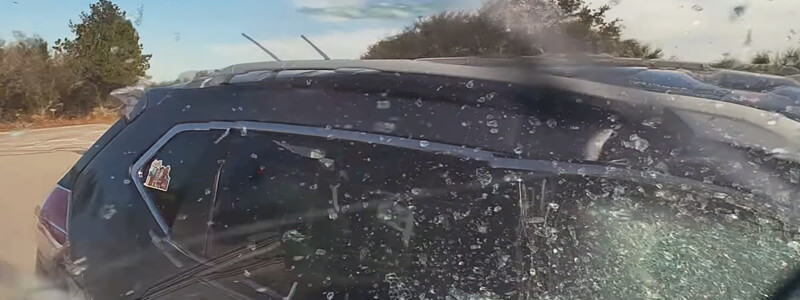
Distracted Driving
Another common cause of T-bone accidents is distracted driving. Drivers who are texting, talking on the phone, or engaging in other distracting activities are more likely to miss traffic signals, fail to yield the right of way, or fail to see oncoming traffic, leading to a T-bone accident.
Speeding
Speeding is also a common cause of T-bone accidents. When a driver is driving above the speed limit, they have less time to react to traffic signals or other vehicles on the road, increasing the risk of a T-bone accident.
Drunk Driving
Lastly, drunk driving is another major cause of T-bone accidents. When a driver is under the influence of alcohol or drugs, their reaction time and judgment are impaired, increasing the likelihood of causing a T-bone accident.
Common T-Bone Car Accident Injuries
T-bone car accidents occur when the front end of one vehicle strikes the side of another, often resulting in serious injury to one or both drivers. Understanding the most common kinds of injuries sustained in these collisions can help you recognize the signs and seek treatment quickly.
Head and Neck Injuries
Head and neck trauma is unfortunately one of the more frequent types of injuries caused by T-bone car accidents. Whiplash, concussions, and traumatic brain injuries are just a few of the potential consequences of this type of collision. These injury types can range from mild to severe, so it’s important to be aware of all symptoms that may arise as soon as possible.
Upper and Lower Body Injuries
The jolt of a T-bone accident can cause arm, shoulder, elbow, wrist, hip, knee, ankle, and foot trauma. Depending on the force of impact, these sorts of injuries can range from minor bruising and sprains to broken bones and tissue damage. As with head and neck injuries, careful observation and prompt medical attention can be key to a successful recovery.
Internal Injuries
Internal bleeding may occur after a T-bone accident, even if other outward signs of trauma are not immediately apparent. If you experience signs such as abdominal pain, dizziness, lightheadedness, excessive sweating, increased heart rate, or confusion, seek medical help right away.
Emotional Trauma
Car accidents often leave behind emotional scars that are just as real as any physical injury. Anxiety, PTSD, depression, and other psychological conditions can manifest in the wake of a crash. Taking part in counseling or therapy can help victims cope with the long-term effects of their accident-related trauma.
Determining Fault in a T-Bone Accident
It is an established legal principle that in order to be deemed legally liable for an automobile accident, three conditions must be present.
The first of these is a duty of care, which is the requirement of exercising reasonable care while operating a vehicle. A breach of this duty is defined as any failure to exercise such reasonable care, such as ignoring traffic signals or signs.
The third condition is proximate cause: meaning that the breach of the duty of care must be the direct cause of the accident and any resulting injury.
When it comes to determining who is at fault in an auto accident, there are several factors to consider. One driver may be considered fully at fault, or one driver might be primarily at fault, with the other contributing to some degree. For example, if a driver runs a red light and broadsides another vehicle that had right-of-way, then that driver will likely be deemed negligent and held responsible for any damages and injuries caused by the collision. Similarly, if a car is not properly positioned in an intersection and ends up being broadsided, the driver is likely to be held mainly at fault.
In conclusion, when assigning fault in an auto accident, the courts look to see if all three of the above-outlined legal conditions have been met. If so, then the liable driver or drivers can be determined accordingly. It is important to remember that responsibility for an accident can extend beyond just one person – multiple parties may be held responsible depending on the circumstances surrounding the occurrence.
Determining fault in a T-bone accident can be a complicated process. It requires a thorough investigation of the accident scene, witness statements, police reports, and other relevant evidence.
The driver who is at fault for the accident is typically the one who violated traffic laws or failed to exercise reasonable care while driving. This could include:
- running a red light or stop sign
- failing to yield the right-of-way
- driving under the influence of drugs or alcohol.
Partial Fault
However, in some cases, both drivers may be partially at fault for the accident, in which case fault is determined by the percentage of negligence attributed to each driver.
How to Prove Fault in a T-Bone Accident
Proving fault in a t-bone accident can be challenging, but it’s crucial in seeking compensation for damages and injuries. Typically, the driver who caused the accident is considered at fault. However, this is not always the case. To prove fault, you need to gather evidence, such as witness statements, police reports, and photographs of the scene and vehicles involved. It’s essential to obtain accurate and detailed information to support your claim.
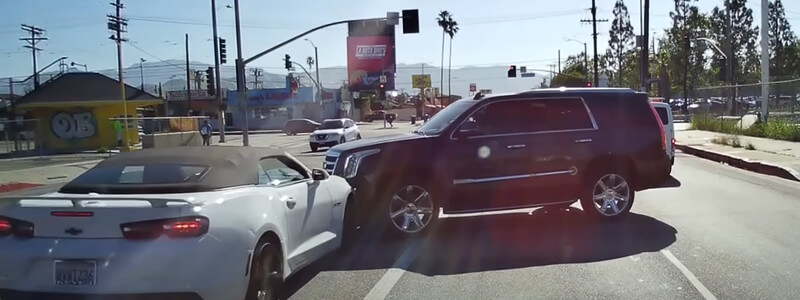
Eyewitnesses
Eyewitnesses can provide valuable information about the accident, including who had the right of way, the speed of the vehicles, and the behavior of the drivers involved. If possible, gather contact information from witnesses, so you or your attorney can follow up with them later.
Police reports
Police reports are also crucial in determining fault. They contain details of the accident, including the location, time, weather conditions, and the officer’s observations. Police reports can shed light on who was at fault and provide additional evidence to support your claim.
Photograph the scene
Photographs of the scene and vehicles involved can also help prove fault. Take pictures of the damage to all involved vehicles, any skid marks, traffic signs, and traffic lights. These photos can help reconstruct the accident and determine who was at fault.
Steps to Take After a T-Bone Accident
Being involved in a T-bone accident can be a traumatic and stressful experience, but it’s important to remember that there are steps you can take to protect yourself and seek compensation for any damages you may have suffered. Here are some essential steps to follow after a T-bone accident:
- Check for Injuries: The first priority after any accident is to check for injuries. If anyone is hurt, call for medical assistance immediately.
- Call the Police: It’s essential to call the police after any accident, including a T-bone accident. They will create a report that documents the accident and helps determine fault.
- Exchange Information: Exchange contact and insurance information with the other driver involved in the accident. Also, collect the names and contact information of any witnesses.
- Take Pictures: Taking pictures of the accident scene, any damage to the vehicles, and the surrounding area can be helpful when seeking compensation from insurance companies.
- Contact an Experienced Attorney: Seeking legal guidance from an experienced attorney is crucial to ensure that your rights are protected and that you receive fair compensation for any damages or injuries you may have suffered.
By following these steps after a T-bone accident, you can protect yourself and your legal rights while seeking the compensation you deserve.
When to Call an Attorney
If you have been involved in a T-bone accident and are seeking compensation, it is important to consider calling an attorney. An experienced attorney can help you determine fault and navigate the legal complexities of your case.
A T-bone accident can result in :
- devastating injuries
- property damage
- loss of income
If you were not at fault, you deserve compensation for your losses. An attorney can help you gather evidence, build a strong case, and negotiate with insurance companies and other parties involved. They can also represent you in court if necessary.
It is important to call an attorney as soon as possible after the accident. Evidence can disappear quickly, and memories can fade. The longer you wait, the harder it may be to build a strong case. An attorney can help you stay on top of deadlines and ensure that your case is handled efficiently and effectively.
If you have been involved in a T-bone accident, be sure to take care of yourself first. Seek medical attention if needed and contact your insurance company. Then, consider calling an attorney to help you seek the compensation you deserve.
Medical Treatment After a Side Impact Accident
After being involved in a T-bone accident, it’s crucial to seek medical treatment immediately, even if you believe you have suffered no major injuries. The impact of a T-bone accident can cause a variety of injuries such as whiplash, fractures, internal bleeding, or even traumatic brain injuries.
In some cases, the symptoms of these injuries may not become apparent until hours or even days after the accident. Seeking medical attention will not only ensure that you receive the necessary treatment for any injuries, but it will also create a record of your injuries that can be used as evidence if you decide to pursue a personal injury claim.
Medical records serve as crucial evidence in personal injury claims as they document your injuries, the treatment you received, and the expenses incurred due to the medical treatment. These records can help establish a causal link between the accident and your injuries, which is necessary to prove fault and seek compensation.
Seeking medical treatment can help you avoid any complications that may arise from untreated injuries. It’s important to remember that the health and well-being of you and your loved ones are paramount. Seeking medical treatment should be your top priority after being involved in a T-bone accident.
Seeking Compensation for Damages
If you were involved in a T-bone accident and suffered damages, you may be entitled to compensation. Seeking compensation for damages can be a complex process, and it’s important to work with a qualified personal injury attorney who can guide you through the process and help you get the compensation you deserve.
Your attorney will assess the damages you suffered as a result of the accident, including:
- medical expenses
- lost wages
- pain and suffering
- property damage
They will also investigate the accident to determine who was at fault.
In T-bone accidents, the fault is often clear-cut, as the driver who failed to yield or ran a red light is typically at fault. However, there may be cases where the fault is disputed, such as when both drivers claim to have had the green light.
Once fault is determined, your attorney will work to negotiate a settlement with the other driver’s insurance company. If a settlement cannot be reached, your attorney may advise taking the case to court. It’s important to note that there are statutes of limitations for filing personal injury claims, so it’s important to act quickly and seek legal help as soon as possible.
Conclusion and Final Thoughts
In conclusion, being involved in a T-bone accident can be a traumatic experience, but understanding how fault is determined and seeking compensation can help make the process less overwhelming. Remember to take pictures of the scene, gather witness information, and seek medical attention immediately. It is important to contact a lawyer who specializes in csar accident cases to help guide you through the legal process and ensure you receive the compensation you deserve.
Always remember to drive defensively and according to traffic laws to prevent T-bone accidents from occurring in the first place. Stay alert, avoid distractions, and practice safe driving habits to keep yourself and others on the road safe.
We hope our article on T-bone accidents was informative and helpful for you. These types of accidents can be very serious and often result in significant damage to both vehicles involved and potential injuries to those inside. It’s crucial to determine fault accurately and seek compensation for your losses. Consult with a professional auto accident attorney for your case and gather as much evidence as possible to support your claim. We hope that this article has been useful to you in understanding how to determine fault and seek compensation in T-bone accidents.
FAQs on T-Bone Accidents
Who is usually at fault in a T-bone?
The driver of the vehicle that cut across the other’s path is typically held responsible for a T-bone crash. This is because drivers are expected to observe traffic laws and watch for oncoming traffic before entering intersections or making turns.
What does T boned mean in an accident?
The term “T-boned” is used to describe any collision that occurs when one vehicle strikes the side of another vehicle, forming a “T” shape. This type of accident most commonly occurs when one driver fails to yield or otherwise violates the right-of-way of another driver at an intersection.
What causes a T-bone accident?
Generally speaking, T-bone accidents are caused by driver negligence or error. Common causes include disobeying stop signs and red lights, failing to yield the right-of-way to other vehicles, driving too fast for conditions, failing to check blind spots when turning, and distracted driving.
How would you determine who was at fault in this collision?
Fault in a T-bone crash can often be determined through evidence such as police reports, witness statements, security camera footage, and damage done to both vehicles. In some cases, expert testimony may be needed in order to make a final determination of fault.
Are T-bone accidents common?
Unfortunately, yes. T-bone accidents are among the most common types of car collisions due to their prevalence in intersections. According to recent data, more than 4 million of these kinds of crashes occur every year.
What side of the car gets t boned the most?
Typically, it is the side of the vehicle closest to the direction from which the other vehicle is approaching that gets t-boned the most. However, depending on the specific situation, both sides of the vehicle can be impacted.
What bone is most likely to break in a car accident?
Broken bones are a common injury sustained during car accidents. Depending on the type and severity of the collision, various bones can be broken—including ribs, collarbones, vertebrae, and limbs.
What percent of T-bone crashes are fatal?
Although all motor vehicle crashes carry potential risks of death or serious injury, T-bone collisions can be particularly dangerous due to their design and impact trajectories. Approximately 8% of all fatal car crashes are T-bone collisions.
What injuries can you get from getting T boned?
Injuries sustained in a T-bone crash can vary based on the speed of each vehicle and the point of impact. Some potential injuries include broken bones, internal organ damage, spinal cord injury, traumatic brain injury, psychological trauma, whiplash, neck pain, back pain, cuts, bruises, and scarring.
Is T-bone the worst accident?
It depends on many factors including the speed involved and where the impact occurred. All motor vehicle accidents have the potential to cause devastating injuries and property damage, so all drivers should take proper precautions to reduce their risk behind the wheel.
Can you survive a T-bone crash?
Yes, with the proper safety equipment and by driving defensively, many people do survive T-bone crashes without major injuries. However, taking precautionary measures such as wearing seat belts and observing traffic laws greatly increases your chances of surviving a T-bone collision unharmed.

